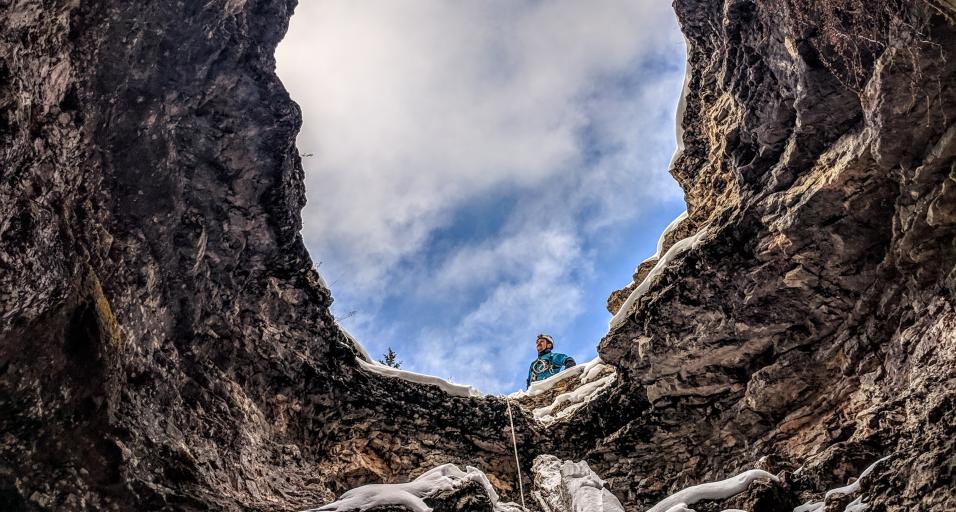Provided by Nongame Technician Ellen Whittle
Field work doesn’t end with the summer for bat biologists, but following bats to their winter hideouts requires a different set of skills. In mid-November, nongame personnel traveled to a cave in the Bighorn Mountains to find out if it is a winter roost used by bats to hibernate. The cave entrance is located on a high, windswept ridge where drifted snow piles up quickly. Members of the Hole-In-the-Wall Grotto and the Northern Rocky Mountain Grotto volunteered to help with the survey, which allowed the near-vertical opening to be entered safely using ropes and vertical caving techniques.
The collaborative survey team rappelled into the cave one at a time and began the survey. They used headlamps to scan walls and crevices in the ceiling for bats as they walked and crawled through the cave. Throughout the 600 feet of passage, they identified five mouse-eared bats (Myotis genus) and seven Townsend’s big-eared bats, which were already hibernating for the winter. The bats were sleeping cozily in temperatures that were barely above freezing (the cold, stable subterranean climate allows them to lower their metabolism to conserve energy). The smallest bats were tucked into tiny pockets in the ceiling where they can remain undisturbed for months. Like most hibernating mammals, these bats will only arouse infrequently throughout the winter to allow their bodies to clear metabolic waste.
The surveyors were excited to find five Myotis roosting in the same small cave. Though most of the bats caught during statewide bat surveys are from the Myotis genus, relatively few of these are found during winter cave surveys. Finding hibernating Myotis bats is more important than ever, as the fungus that causes white-nose syndrome (WNS) was found on a bat in Fort Laramie in the spring of 2018. Though neither the fungus nor the disease has yet been found on hibernating bats in the state, the recent detection indicates that the fungus is in the state and will soon begin impacting bats during hibernation. WNS causes bats to use their stored fat more quickly, resulting in death from starvation or from exposure when they emerge into unforgiving winter conditions to search for food.
Click here for more information about ongoing research of WNS and hibernating bats.
Wyoming's newest bat hibernaculum
Sheridan Regional Office 307-672-7418

